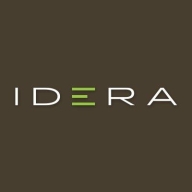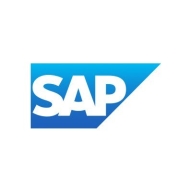

IDERA ER/Studio and LeanIX compete in the data modeling and enterprise architecture management category. LeanIX seems to have the upper hand due to its user-friendly workflows and strong application portfolio management features.
Features: IDERA ER/Studio offers graphical and formatting capabilities along with robust reverse engineering features aiding in analyzing undocumented legacy databases. It supports detailed modeling, data lineage tracking, and collaboration through a centralized repository and TeamServer, allowing multiple users to work on singular models. LeanIX emphasizes user-friendly workflows and application portfolio management, offering integration capabilities with tools like ServiceNow and Technopedia. It provides graphical interfaces suitable for both technical and non-technical users, simplifying enterprise architecture practices.
Room for Improvement: IDERA ER/Studio could improve deployment and licensing processes, addressing performance issues like slow repository operations and outdated UX compared to cloud-native tools. LeanIX needs to enhance its reporting variety and flexibility in data import and cost allocation. Documentation and support for advanced features and custom integrations also need enhancement.
Ease of Deployment and Customer Service: IDERA ER/Studio operates mostly on-premises, needing more in-house infrastructure support, whereas LeanIX runs on public cloud platforms, offering flexibility and accessibility. IDERA’s technical support varies, with some responsive experiences but also some delays. LeanIX’s support is generally positive, although response times can be affected by geographical differences.
Pricing and ROI: IDERA ER/Studio is viewed as expensive, with high licensing and maintenance costs, although users feel its feature set justifies the expense. LeanIX offers scalable pricing based on application counts, potentially delivering better value for managing numerous applications. IDERA’s ROI is appreciated for its time-saving features, while LeanIX provides a competitive pricing structure with its flexible application-based licensing model.
In 24 months, after you've deployed the tool and you've got a lot of good validated data, you're probably looking at consolidating and saving your organization ongoing savings that is equatable to how much the tool would cost you on a yearly basis.
The ROI is seen more on the optimization side and the ability to map applications comprehensively rather than direct cost savings.
There is plenty of documentation available online for assistance, making it straightforward to address any issues.
The support includes engagement from Technical Advisable Management, who helps us understand and utilize new product features effectively.
Sometimes the challenges with the first level that you actually speak to, they don't understand the problem.
For support, I'll probably give them a seven.
It scales well to teams of one hundred plus people.
I've never seen any issues with being able to scale up or scale down the capabilities of the solution at all.
Erwin is a very stable product.
We've had issues where we've had to go back to SAP and ask for help with issues that we've had with core capabilities that were supposed to be there but weren't working.
Both Erwin and ER/Studio do not have AI or machine learning features for automation.
A default framework would provide a base that organizations can quickly adopt and customize, reducing the time and effort spent on adoption.
The challenge with support was probably the response time.
They should implement their ticketing system natively within the application instead of relying on email.
The setup cost may have been around $1500 to $2000.
In terms of pricing, ER/Studio is slightly more expensive compared to Erwin, by about five to ten percent.
It cost me $91,000 a year for 300 applications.
Our usage and costs depend on the number of applications, and as the number of applications grows, so does the cost.
It has strong versioning support and can even integrate with third-party versioning tools like GitHub.
When we built an application, it facilitated the development process by providing the skeleton of the application and the foundation for functions.
Being able to do the lineage all the way through so that each one of those you can pull them out into their component parts to determine exactly which areas you need to resolve, fix, plan, or build a strategy around.
It ensures cost optimization by identifying duplicate applications and stopping unnecessary application onboarding.
When you align it or map it to your business capabilities, this is how you identify duplication of technologies in your business.
| Product | Market Share (%) |
|---|---|
| LeanIX | 13.1% |
| IDERA ER/Studio | 3.7% |
| Other | 83.2% |


| Company Size | Count |
|---|---|
| Small Business | 4 |
| Midsize Enterprise | 11 |
| Large Enterprise | 25 |
| Company Size | Count |
|---|---|
| Small Business | 8 |
| Midsize Enterprise | 3 |
| Large Enterprise | 13 |
IDERA ER/Studio is a powerful suite for business-driven data modeling that enables companies to create an enterprise architecture foundation for data governance. With round-trip support for multiple database platforms, data architects have the power to reverse-engineer, analyze, and optimize existing databases easily from diverse platforms. Data professionals can easily capture and share models, metadata, data sources, and glossaries across the organization for improved alignment between the organization and Information Technology. Organizational stakeholders can take part in the metadata definition workflow and access information on models and metadata at the right level for their needs.
Unlike its competition, it provides the broadest range of data platform support, industry-leading enterprise-level capabilities, visual data lineage and flow modeling, full dimensional modeling for data warehousing and business intelligence, and business data objects to bridge the gap between developers and data architects. It also provides a complete solution for enterprise architecture and data governance, extensive model change management, unique incorporation of true enterprise data dictionaries, unique linking of constructs across models, integrated visual data lineage import, and integrated data and business process modeling.
SAP LeanIX provides enterprise architecture solutions that modernize IT and transform businesses, integrating AI-enriched, SaaS tools to enhance architecture visualization and evolution.
Embracing a comprehensive approach, SAP LeanIX supports organizations globally with tools that foster IT landscape optimization and forward-looking architecture creation. It offers solutions for real-time IT overviews, risk management, and architectural planning. These capabilities ensure that enterprises have the flexibility and insights needed to maximize their business impact and align their IT strategies with their organizational goals. SAP LeanIX is recognized for its ease of use, flexible reporting, and the ability to seamlessly integrate various data sources.
What features define SAP LeanIX?SAP LeanIX is implemented across industries to enhance enterprise architecture, application portfolio management, and business capability mapping. Its use extends into cloud governance, data flow analysis, and integration architecture, allowing multiple organizations to improve operational visibility and strategic planning. It also enables cataloging systems and app rationalization while linking capabilities for improved lifecycle management.
We monitor all Enterprise Architecture Management reviews to prevent fraudulent reviews and keep review quality high. We do not post reviews by company employees or direct competitors. We validate each review for authenticity via cross-reference with LinkedIn, and personal follow-up with the reviewer when necessary.